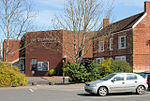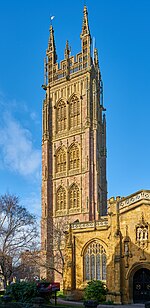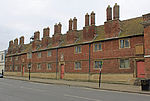Somerset Cricket Museum
1989 establishments in EnglandBuildings and structures in TauntonCricket in SomersetGrade II* listed buildings in Taunton DeaneGrade II* listed museum buildings ... and 6 more
History of SomersetMuseums established in 1989Museums in SomersetSomerset County Cricket ClubSports museums in EnglandUse British English from February 2023

Somerset Cricket Museum in Taunton, Somerset, England, is a small museum housing exhibits on the history of cricket with a particular emphasis on the history of Somerset County Cricket Club.
Excerpt from the Wikipedia article Somerset Cricket Museum (License: CC BY-SA 3.0, Authors, Images).Somerset Cricket Museum
Priory's Walk,
Geographical coordinates (GPS) Address Nearby Places Show on map
Geographical coordinates (GPS)
| Latitude | Longitude |
|---|---|
| N 51.0189 ° | E -3.0989 ° |
Address
SCCC Car Park B
Priory's Walk
TA1 1JU , Firepool
England, United Kingdom
Open on Google Maps










